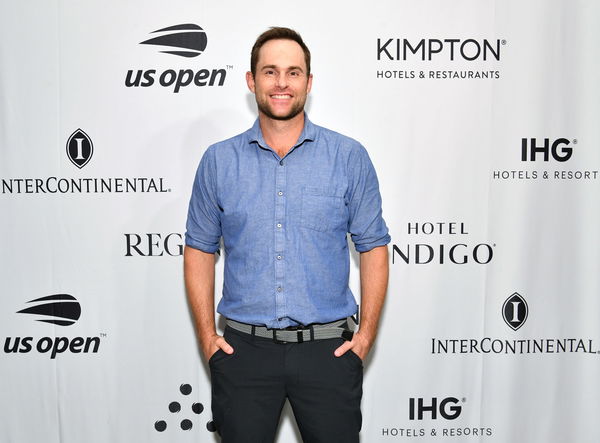
via Getty
NEW YORK, NEW YORK – AUGUST 21: In town for the US Open, Andy Roddick walks the red carpet at the IHG “Legends, Unmatched” soiree at the Kimpton Hotel Eventi on August 21, 2019 in New York City. (Photo by Dia Dipasupil/Getty Images for IHG Hotels & Resorts)

via Getty
NEW YORK, NEW YORK – AUGUST 21: In town for the US Open, Andy Roddick walks the red carpet at the IHG “Legends, Unmatched” soiree at the Kimpton Hotel Eventi on August 21, 2019 in New York City. (Photo by Dia Dipasupil/Getty Images for IHG Hotels & Resorts)

It’s not uncommon these days for organizers to schedule a midnight match. It happened during the French Open, and again at the US Open. How to achieve the perfect balance in scheduling the matches? This question has popped up more frequently post this year’s hard court major, as a few matches flew past midnight. Particularly during R3 featuring Aryna Sabalenka. Though the length of the match does provide an unpredictability to the schedule, but how can organizers make things better? Andy Roddick might have a probable solution for it!
Watch What’s Trending Now!
After the continuous conundrum over the scheduling, the US Open tournament director, Stacey Allaster, and Andy Roddick discussed the issue at length. During the September 17th episode of Served with Andy Roddick, Allaster discussed Sabalenka’s R3 match incident, which centered around the gap between the moment when Novak Djokovic’s match was over, and before Sabalenka’s match began. Addressing the issue, Roddick accepted that the situation was not perfect during the live event. But there are a few things that need to be considered.
The length of the match. Usually, men’s matches can extend for 4 hours, and even 5 hours if things are intense. Moreover, there can be an injury scare that may require another 20 minutes. Moreover, matches are unpredictable, as no player wants to let go until the last point of the match. Weighing on the fact that a set can turn an anticipated 3-hour match into a 6-hour match. Roddick further said,
ADVERTISEMENT
Article continues below this ad
“And you can be 20 minutes away from going on for six hours, depending on who, what, what match you’re following. So pretending as if there’s like a scripted version of this problem. It isn’t the place to start the conversation.” However, the American legend had a probable solution to convey for the woes of the players to Allaster.

USA Today via Reuters
Aug 10, 2024; Toronto, Ontario, Canada; Aryna Sabalenka sets up to return a ball to Amanda Anisimova (not pictured) during quarter finals at Sobeys Stadium. Mandatory Credit: John E. Sokolowski-USA TODAY Sports
What if the organizers started an hour early? That could give headway to everyone, players, and organizers, and prevent late-night matches. “And another thing like, I personally think the 11 am start like, maybe that’s the easiest way to mitigate it,”– he remarked. However, there are a few things that need to be kept in mind. The ESPN broadcastings and fans waiting outside to get settled in also take time. No one wants to miss out on the first few games while settling in.
ADVERTISEMENT
Article continues below this ad
Particularly at the US Open, where several rules were changed right ahead of the major, players are struggling to adapt. Be it the free fan movement, or the change in venues according to the match, things seem to be taking time before falling into the place.
Poll of the day
Poll 1 of 2
AD
New Rules and the changing scenarios at the US Open that had players on their toes
Firstly, the scheduling woe already had a solution ready. Last week, Allaster had said that if the second evening match on Ashe or the final match on Armstrong runs past 11:15 PM, the referee may decide to move it to a different court. This was not all.
ADVERTISEMENT
Article continues below this ad
What’s your perspective on:
Is Andy Roddick's advice the key to surviving the unpredictable world of modern tennis?
Have an interesting take?
Fan movement was allowed even during the matches, in addition to an extended video review. However, it all worked less in favor of the players. In a few cases, they didn’t reschedule matches to other courts. Fan movement hindered a few players during their matches, as the chair umpire had to say, “Find your seats quickly, please!” on several occasions.
Everyone is well aware that the only constant is change. However, adaptation to changing scenarios is certainly a time-consuming process. Hopefully, things will work out in favor of all the stakeholders at the end of the day!
ADVERTISEMENT
ADVERTISEMENT
ADVERTISEMENT
ADVERTISEMENT



Is Andy Roddick's advice the key to surviving the unpredictable world of modern tennis?